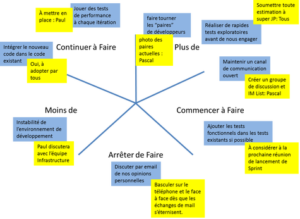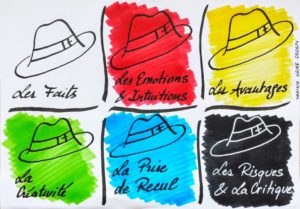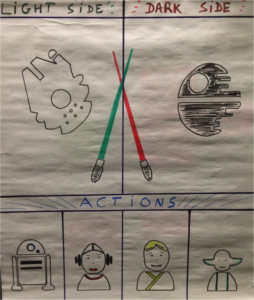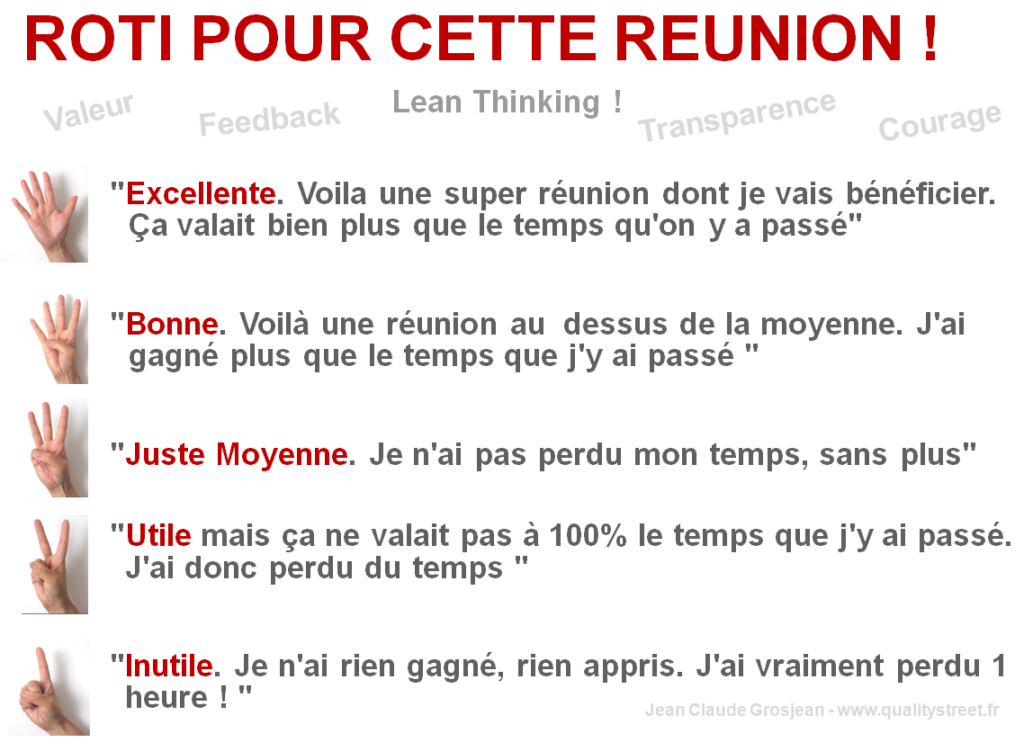Good practices for a successful retrospective
A retrospective consists of two main parts: Gathering everyone's opinions on the progress of the project and deciding on actions to be taken by everyone. However, first and foremost, a retrospective must take place within a "zone" of trust.
To do this, it is important to ensure that everyone participating in the meeting feels completely comfortable and free to talk about what may be sensitive issues. To do this, it is best to exclude the hierarchy from this key moment in the project, so that participants are not pressured to express themselves freely.
Once this is done, an icebreaker is very popular to relax the atmosphere. Indeed, this short game (many games of this type are available on the web) allows you to forget the worries linked to the project or anything else and thus be completely ready to collaborate, as a team, at the meeting. Who has never been confronted with the problem of running out of ideas because one was too preoccupied with other external subjects?
The next step, and certainly the most entertaining one, is to collect information about the progress of the project in the form of a game.
There are many of these, of which the following are some examples:
-Starfish
- 4L (like, learn, long for, lacked)
- Swot
- Speedboat
- Lego play (access game more on emotion)
- 6 bono hats
The most classic one is of course the one using Post-it notes to list the positive points that need to be improved.
You can also start with an existing game and personalise it to increase the collective good mood and therefore the involvement.



The Post-it notes can be summarised by grouping them into families, if many are similar, and prioritising them. The ranking ensures that the most important points will be dealt with in the time available for the retrospective. The duration is 3 hours for a one month sprint, or 1.5 hours for a two week sprint.
Then comes the final phase of actions to be implemented for each of the points or families on the table. It is important to select at least 3 or 4 actions that should be carried out by the next retrospective. Otherwise, no changes or improvements will be made and the meeting will lose its interest.
A meeting may conclude with a ROTI, "Return On Time Invested"or in French Return of time investedThis is a quick vote on the usefulness of the meeting. Each participant casts a vote on a scale of 1 to 5. This vote allows us to judge whether the voters were receptive and therefore to adjust the organisation of the next meeting if necessary.
Are you interested in this topic?